The hand twist claw tiller.
What Is Included in This Post:
- Introduction to the Hand Twist Claw Tiller
- Understanding Different Soil Types and Their Challenges
- Preparing the Soil for Tilling with the Hand Twist Claw Tiller
- Using the Hand Twist Claw Tiller Properly: Techniques and Best Practices
- Overcoming Challenges: Tackling Compact and Rocky Soil
- Maintaining and Caring for the Hand Twist Claw Tiller
- Tips and Tricks for Successful Tilling with the Hand Twist Claw Tiller
- Achieving Productive Gardening with the Hand Twist Claw Tiller
- Conclusion
- Frequently Asked Questions
Gardening enthusiasts know that having healthy and fertile soil is crucial for successful plant growth. However, many gardeners face the challenge of dealing with tough and compacted soil that hinders the growth of their beloved plants. This is where the hand twist claw tiller comes to the rescue. In this article, I will explore the ins and outs of using the hand twist claw tiller to tackle tough soil. From understanding different soil types to mastering the correct techniques and best practices, I will provide you with the knowledge and tools necessary to make your gardening endeavors a fruitful and enjoyable experience. Get ready to transform your garden by harnessing the power of the hand twist claw tiller!
This is a pinnable post. Tap or hover over any image in this post to pin to your Pinterest Boards.

Introduction to the Hand Twist Claw Tiller
What is a Hand Twist Claw Tiller?
So, you’ve got some stubborn soil that’s giving you a hard time. Enter the hand twist claw tiller – your trusty gardening companion that will make tackling tough soil a breeze. But what exactly is this mystical tool? Well, it’s essentially a handheld device with sharp, claw-like prongs designed to break up compacted soil and loosen it up for planting. Think of it as your very own mini cultivator, but with a twist – literally!
Benefits of Using a Hand Twist Claw Tiller
Why bother with a hand twist claw tiller when you could just use a regular garden tiller, you ask? Well, my friend, the benefits are aplenty. Firstly, this nifty little tool is compact and lightweight, making it easy to maneuver around your garden without feeling like you’re dragging an anchor. Secondly, the claw-like prongs are specifically designed to penetrate deep into the soil, giving you more effective tilling power. Last but, certainly not least, using a hand twist claw tiller is not only efficient, but it’s also a great workout for your arms – a win-win situation if you ask me! Plus, it can be used in small spaces that a regular tiller cannot reach!
Meet My Trusty Weasel Garden Claw!
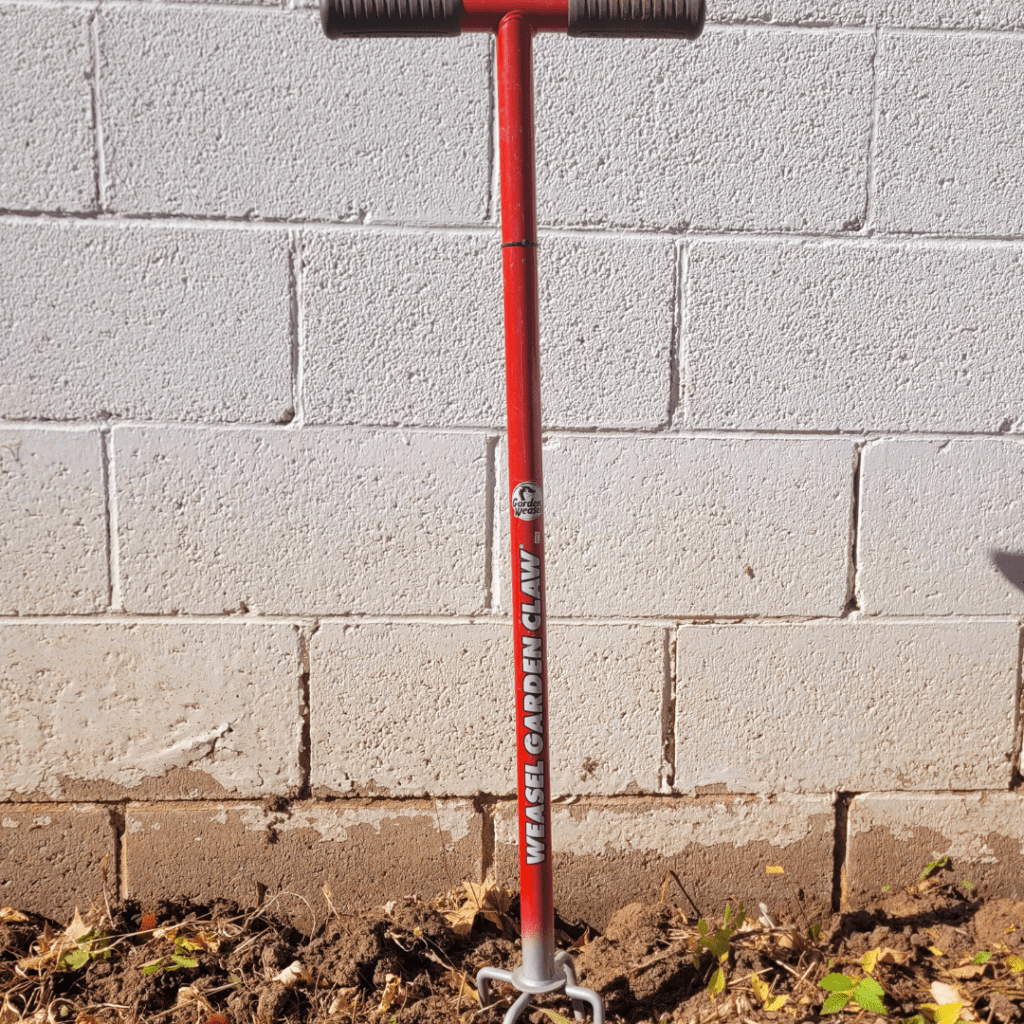

Let me introduce you to my favorite gardening tool, the trusty Weasel Garden Claw! This thing is an absolute game-changer when it comes to prepping my soil for planting. With its sturdy construction and sharp claws, it effortlessly breaks up compacted dirt and removes weeds like a charm. What I love most about it is the simple design – With a long handle, there’s no need to bend or lift. Just push the device into the ground and turn the handle to start cultivating the soil.
Whether you’re getting rid of pesky crabgrass or starting a new bed, the Weasel Garden Claw has got your back! Plus, it’s ergonomically designed with a comfortable handle, so I don’t have to worry about straining my wrists or back while using it. Trust me, once you try this bad boy out, you’ll wonder how you ever gardened without it!
Understanding Different Soil Types and Their Challenges
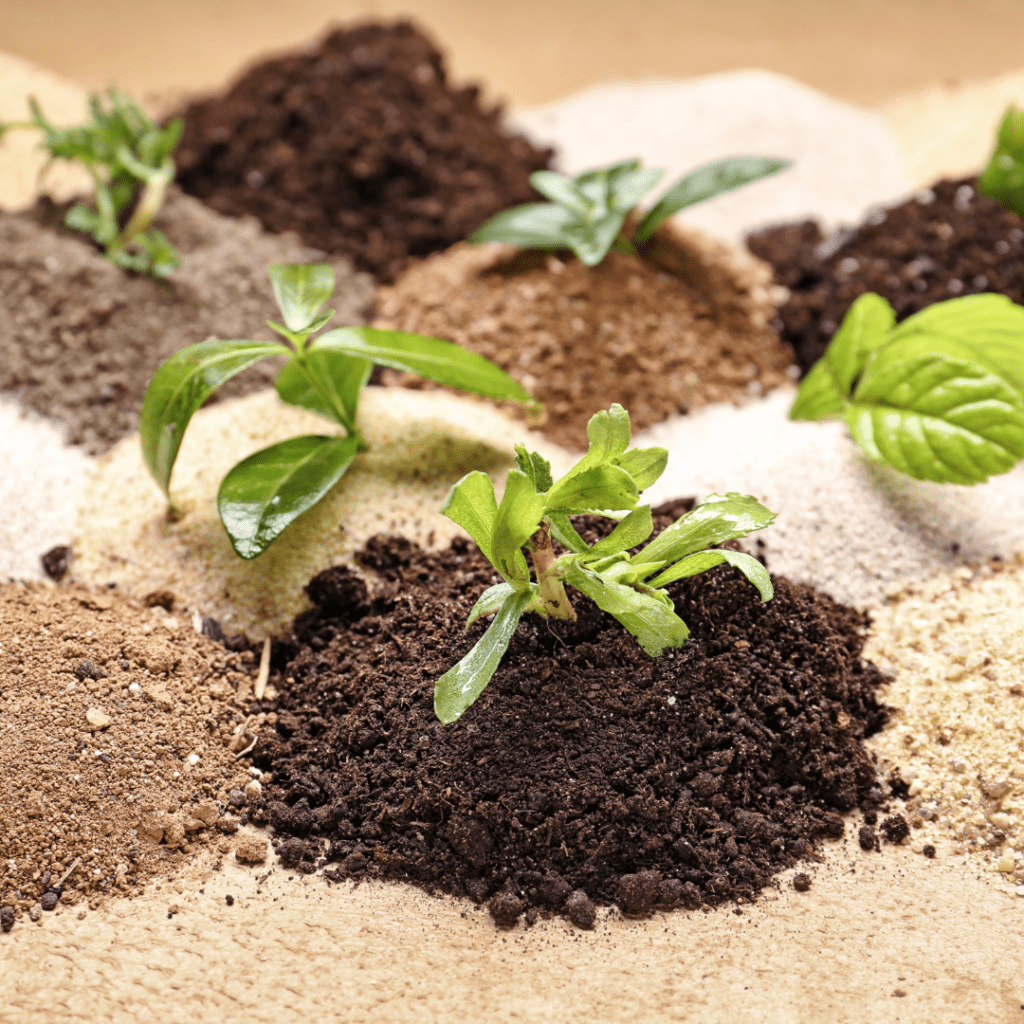
Identifying Soil Types in Your Garden
Before you start tilling away with your hand twist claw tiller, it’s important to know what kind of soil you’re dealing with. Is it sandy, clayey, loamy, or a mix of everything? Identifying your soil type will help you understand its unique characteristics and how it impacts plant growth. Time to put your detective hat on and get to the bottom of your soil’s identity!
To help you better understand your soil, I have created a comprehensive guide with four different DIY soil tests you can perform using simple jars and ingredients you may already have in your home. Check it out at the following link.
4 Easy DIY Garden Soil Tests to Do Now
Challenges Posed by Various Soil Types
Different soil types pose different challenges, and it’s crucial to be aware of them. Sandy soil tends to drain quickly, making it difficult to retain moisture for plants (this is my biggest battle in my garden!) Clayey soil, on the other hand, can become hard and compacted, hindering root growth. And then there’s loamy soil, which is often considered the Holy Grail of gardening due to its perfect balance of drainage and moisture retention. Understanding these challenges will help you tailor your tilling approach to suit your soil’s specific needs.
Preparing the Soil for Tilling with the Hand Twist Claw Tiller
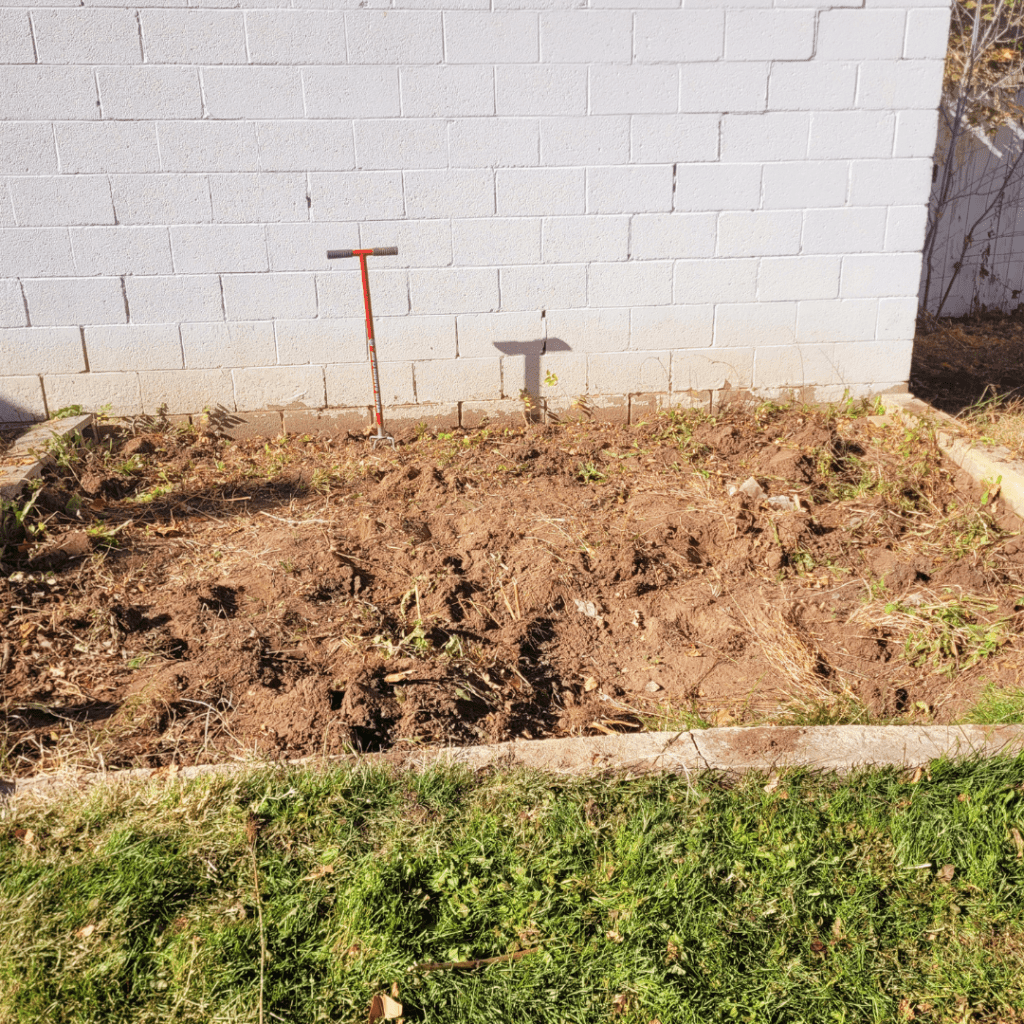
Clearing the Area and Removing Obstacles
Before you embark on your tilling adventure, make sure the area is clear of any rocks or debris that might obstruct your progress. Trust me, the last thing you want is to be battling with an unruly tree root while trying to till your soil or hitting a hard rock in a hard place! Clear the way, my friend, and you’ll thank yourself later!
I had my work cut out for me in this photo with my end-of-the-season harvested garden bed. All that remains are weeds and uneven soil. I am quite a messy gardener throughout the season. My garden beds typically become uneven since I am constantly digging and undigging plants and moving them around as well as harvesting and replanting. This garden bed is a busy one throughout the growing season and it needs some TLC!
Moistening the Soil for Easier Tilling
Moist soil is easier to till, so grab your watering can or hose and give your soil a good drink. You don’t want it to be waterlogged, just slightly damp. This will not only make tilling a breeze, but also minimize the risk of your soil turning into a dusty cloud that engulfs you in a sneeze-inducing frenzy. Moisture is the key – just like in most things in life.
If I were to create a new garden bed, I would definitely saturate the area with water an hour before I begin my work. However, on this day, in this garden, I did not need to work with water as this garden soil is easy to work with.
Using the Hand Twist Claw Tiller Properly: Techniques and Best Practices
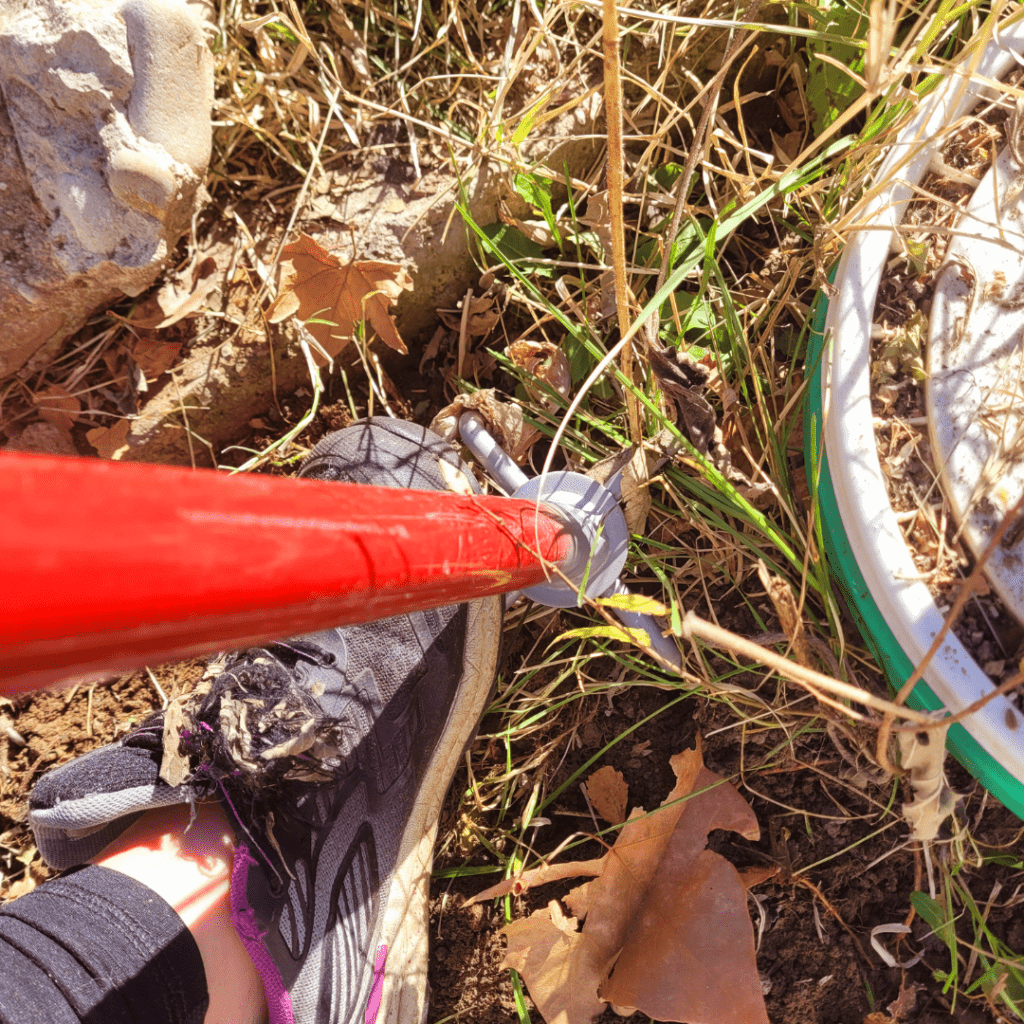
Sometimes, you have to push the claws into the soil with your foot to really get it into the soil around the weeds to twist them right out!
Holding and Gripping the Hand Twist Claw Tiller
Now that you’re armed with a hand twist claw tiller and your soil is prepped, it’s time to get down to business. Hold the tool firmly with both hands, keeping a comfortable grip. Think of it as a handshake – not too loose, not too tight. This will give you better control.
Correct Tilling Motion and Depth
The secret to successful tilling is in the motion. Position the claw prongs just above the soil surface and, using a twisting motion, push the tiller into the soil and then pull it back towards you. Repeat this process, moving forward in a parallel motion, until your entire designated area has been tilled. Oh, and remember – don’t go too deep! You want to break up the compacted soil without disturbing the delicate root systems lurking beneath any surrounding plants.
Overcoming Challenges: Tackling Compact and Rocky Soil
Working with Compact Soil
Tackling compact soil can feel like trying to break through a brick wall with a toothpick. But fear not, fellow gardeners, because the hand twist claw tiller is here to save the day! When facing compact soil, it’s important to start slow and steady. Begin by loosening the surface layer of soil, using the twisting motion of the tiller to break up any clumps. Work your way deeper into the ground, gradually increasing the pressure and strength as you go. Remember to take breaks and hydrate, because let’s face it, tilling compact soil is like doing an intense workout for your arms.
Dealing with Rocky Soil and Roots
Ah, the joys of gardening in rocky soil. It’s like nature’s way of saying, “Hey, let’s add some extra challenge to your gardening adventure!” When faced with rocks and stubborn roots, the hand twist claw tiller can still come to the rescue. Use the tiller to gently maneuver around rocks, carefully breaking them apart if possible. For those pesky roots, try to loosen the soil around them, making it easier to extract them from the ground.
Maintaining and Caring for the Hand Twist Claw Tiller

Cleaning and Storing the Hand Twist Claw Tiller
Now that you’ve conquered your garden with the hand twist claw tiller, it’s time to show it some love in return. Cleaning the tiller is a breeze – just give it a good rinse with water after each use to remove any dirt or debris. Make sure to dry it thoroughly to prevent rust from forming. When it comes to storing, find a cozy spot where it can rest until its next grand gardening adventure. Whether it’s hanging proudly on a wall or nestled in a shed, make sure to keep it in a place of honor, because let’s face it, it’s the hero of your gardening story.

Sharpening the Claws
Claws, like dreams, can sometimes lose their sharpness. But fear not, for sharpening them is a simple task that even a garden gnome could accomplish. If you notice the claws are getting dull, just grab a sharpening tool and gently run it along the edge of each claw. Give them a new lease on life! And of course, if you encounter any irreparable damage or wear and tear, it might be time to bid farewell to a trusty old twist claw and replace it with a shiny new one. However, I am on season 3 with my Weasel Garden Claw!
Tips and Tricks for Successful Tilling with the Hand Twist Claw Tiller
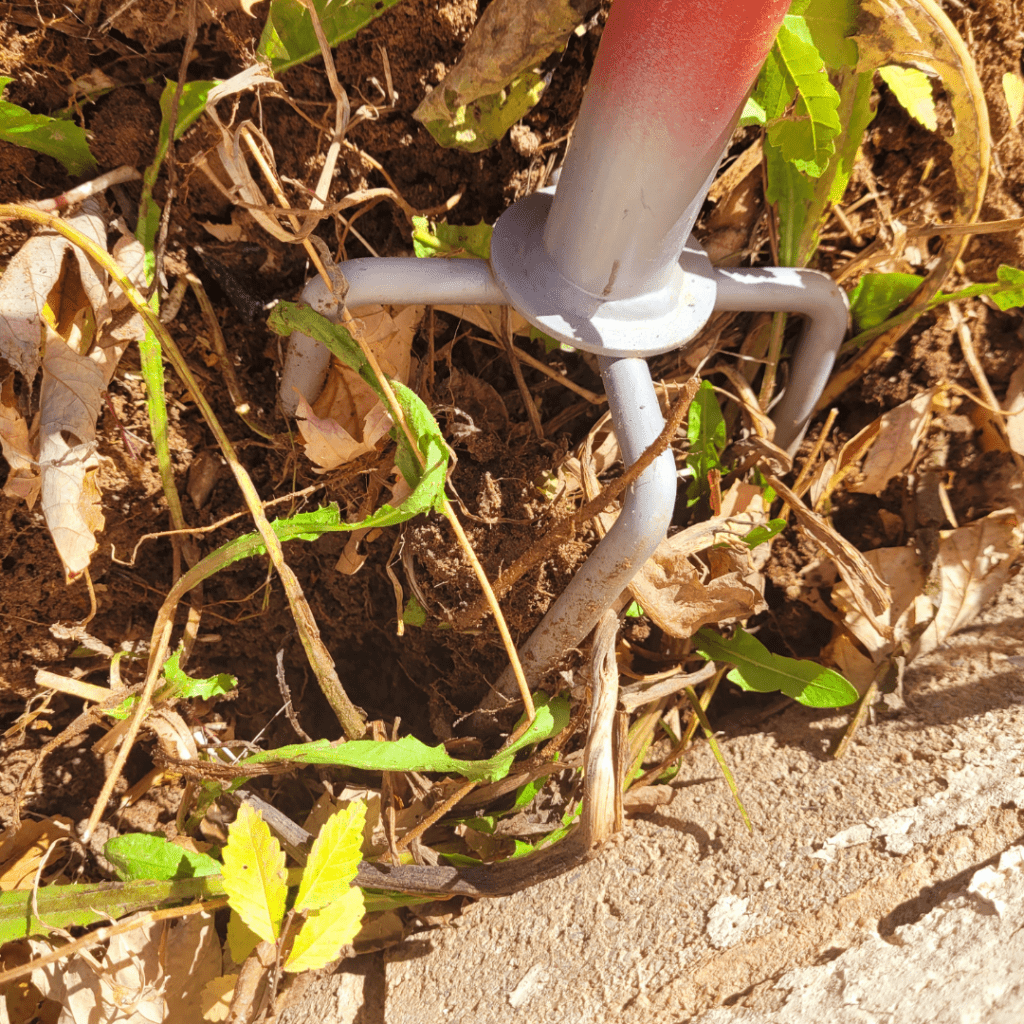
Using the Hand Twist Claw Tiller in Different Garden Areas
Variety is the spice of gardening, so don’t limit yourself to just one garden area. Whether you’re tilling a small patch or preparing a larger plot, the hand twist claw tiller is your versatile companion. Just adapt your technique to suit the needs of each area. For smaller spaces, use shorter and more controlled twists. When dealing with a larger area, embrace the power of longer and wider strokes. Remember, the hand twist claw tiller is like a chameleon, ready to adjust to any garden landscape like a pro.
Maximizing Efficiency and Minimizing Effort
Gardening should be enjoyable, not an endless struggle against the soil. To maximize efficiency and minimize effort while using the hand twist claw tiller, follow these golden principles: First, take breaks when needed, because even superheroes need to catch their breath. Second, use your body weight to your advantage—lean into the tiller and let gravity do some of the work. Finally, don’t be afraid to ask for help from a friend or a fellow gardening enthusiast. They say teamwork makes the dream work, and that couldn’t be truer when it comes to tilling your garden like a boss.
Achieving Productive Gardening with the Hand Twist Claw Tiller
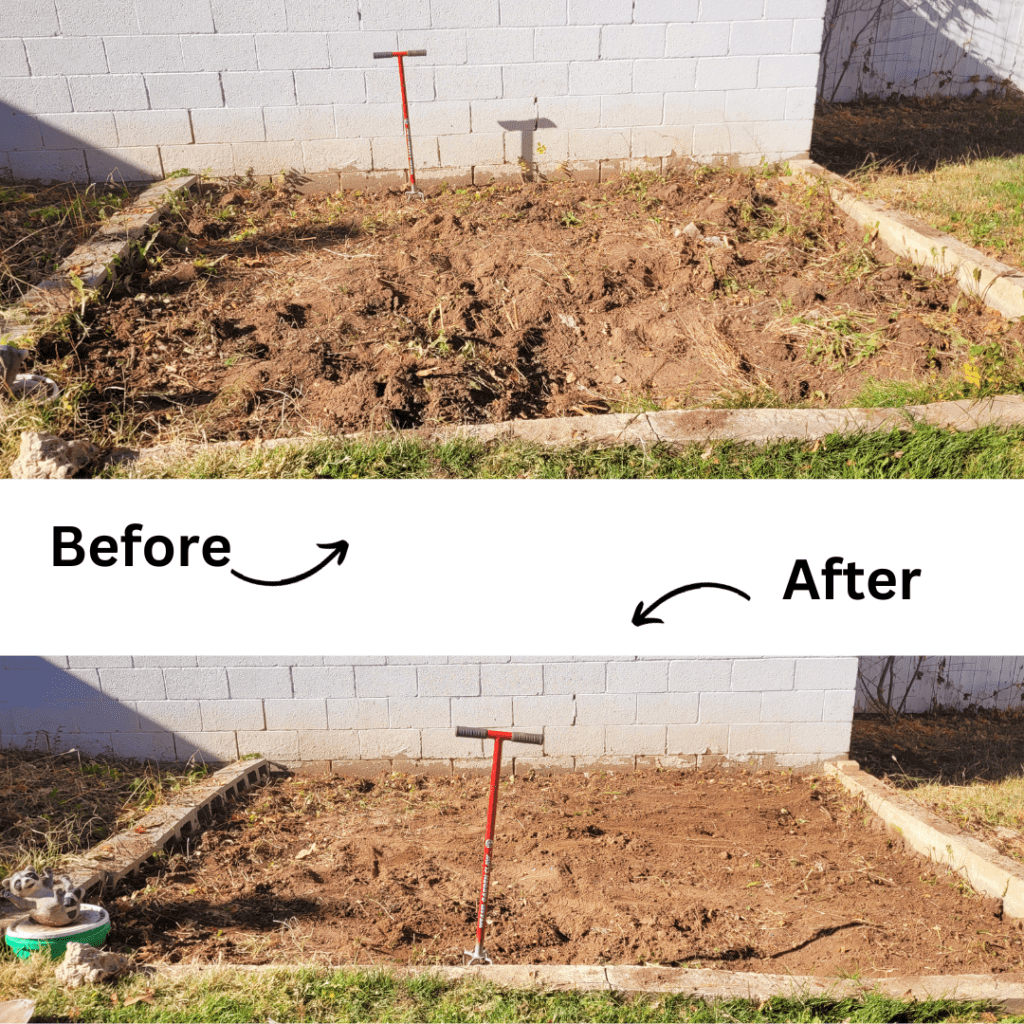
My dear green-thumbed comrades, the hand twist claw tiller is the secret weapon you’ve been waiting for to conquer even the toughest of soil challenges. From compact soil to rocky terrain, this trusty tool will help you turn your garden into a productive paradise. By following the tips and tricks I’ve shared, and with a sprinkle of your own gardening magic, you’ll be well on your way to achieving lush greenery and flourishing blooms. So go forth, fellow gardeners, and may your tilling adventures be filled with bountiful harvests and blissful gardening moments!
While not perfect, I could have kept at it, this garden bed with just the garden twist claw tool was weeded, cultivated, and leveled. This garden bed is ready for fresh compost and mulch to be put to sleep for the winter. While it may look like it is sleeping, blanketed with mulch and the coming snow, tiny microorganisms will be at work improving my garden soil for the coming spring!
Conclusion
In conclusion, the hand twist claw tiller is a valuable tool for any gardener looking to conquer tough soil and create optimal growing conditions for their plants. By understanding different soil types, preparing the soil properly, and using the hand twist claw tiller with the right techniques, you can overcome the challenges posed by compacted, rocky, or uneven soil. Remember to maintain and care for your tiller to ensure its longevity and effectiveness. With the tips and tricks shared in this article, you are now equipped to embark on a successful gardening journey, achieving productive and bountiful results with the help of the hand twist claw tiller. Happy gardening!
Get Your Very Own Garden Weasel Garden Claw Hand Tiller!


Frequently Asked Questions
1. Can the hand twist claw tiller be used in all types of soil?
Yes, the hand twist claw tiller is designed to be versatile and can be used in various soil types. However, it is important to understand the specific challenges posed by different soil types and adjust your tilling technique accordingly.
2. Is the hand twist claw tiller suitable for large garden areas?
The hand twist claw tiller is most effective for small to medium-sized garden areas. For larger areas, it may require more time and effort to achieve the desired results. In such cases, it might be beneficial to consider using motorized or larger-scale tillers for increased efficiency. But if you have the will power, go for it!
3. How often should I maintain and care for my hand twist claw tiller?
Regular maintenance is essential to keep your hand twist claw tiller in optimal condition. It is recommended to clean and store the tiller after each use. Additionally, check the claws periodically for sharpness and consider sharpening or replacing them as needed.
4. Can the hand twist claw tiller be used for purposes other than gardening?
While the hand twist claw tiller is primarily designed for gardening, it can also be used for tasks like loosening soil for planting trees or shrubs, mixing compost, or preparing a small plot for seeding. However, it is important to assess the specific task and ensure that the hand twist claw tiller is suitable for the job at hand.
Summary
I hope I have inspired you to till your garden with the the hand twist claw tiller with these tips and products.
If you were encouraged by this post, I invite you to check out my FREE Printables Page for fun free printables, planners, and charts.
ENTER MY FREE Printables Page HERE
Here are some more of my composting and gardening inspiration posts to check out!
Planning Your Garden: How to Plan a Vegetable Garden: Expert Green Thumb Tips!
Winterizing the Garden: How to Winterize Your Vegetable Garden: Step-by-Step Checklist
Mulching the Garden: How to Make Leaf Litter Mulch
How to Win a Giant Pumpkin Contest
How to Grow a Fall Garden: 9 Best Fall Crops
Clever Ways to Incorporate Indoor Composting into Your Home
How to Start Composting for the Garden: A Step-by-Step Guide
The Ultimate Guide to Composting in Your Suburban Backyard
Why I Built A Survival Garden in My Backyard
How to Grow A Foodscape Garden From Scratch
16 Best Medicinal Herbs to Grow in Your Garden Now
Blessings,
The Off Grid Barefoot Girl




